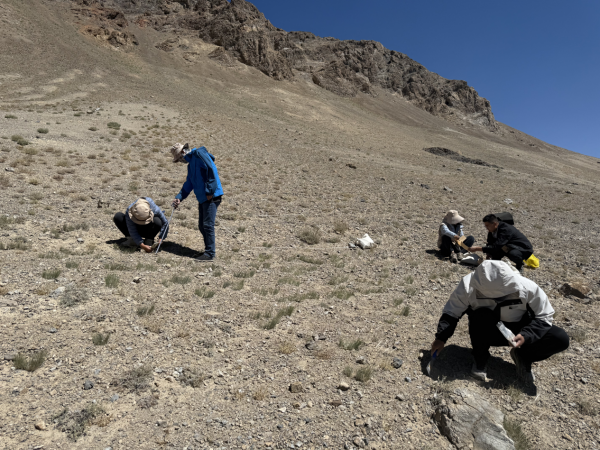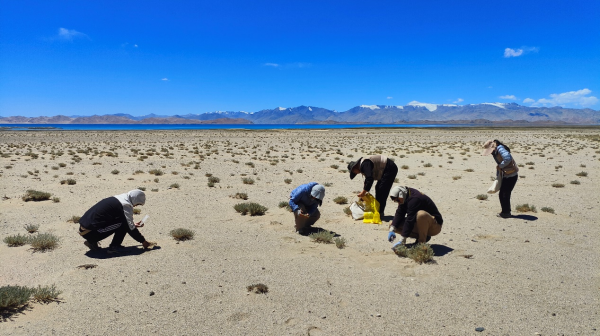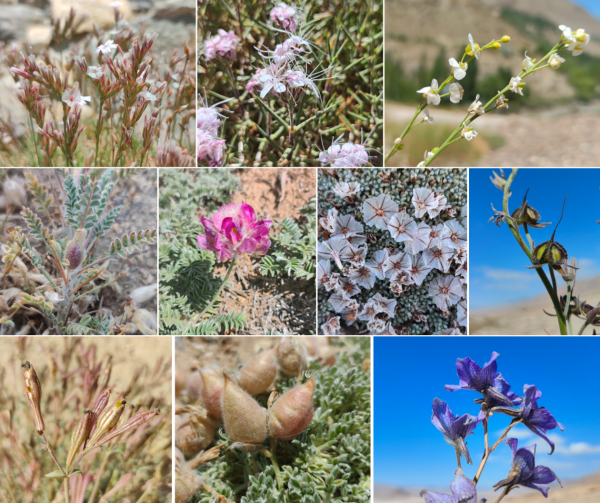Chinese, Tajik Scientists Conduct Vegetation Survey on Pamir Plateau in Tajikistan
2025-09-01
A joint scientific expedition team from both China and Tajikistan has meticulously surveyed the plant diversity of the Pamir Plateau, a globally significant biodiversity hotspot. From July 26 to August 9, 2025, scientists from the Xinjiang Institute of Ecology and Geography of the Chinese Academy of Sciences (CAS), the CAS Research Center for Ecology and Environment of Central Asia (Dushanbe), and the Institute of Botany, Plant Physiology and Genetics of the National Academy of Sciences of Tajikistan joined forces to conduct a comprehensive investigation.
The 10-member team, traversed the eastern, southern, and western regions of the Pamir Plateau, an area renowned for its unique natural landscapes and exceptionally rich biodiversity. Their intensive fieldwork aimed to document plant community characteristics, catalog plant germplasm and genetic resources, and analyze soil physical and chemical properties across a diverse range of ecosystems.
The expedition examined a spectrum of natural environments, from arid montane deserts and semi-deserts to shrublands, remnant coniferous forests, subalpine and alpine meadows, and delicate alpine lake and wetland habitats. The scientists noted the significant altitude variations and the dramatic shifts in landscape across the study area. Dominant plant genera identified included Artemisia, Seriphidium, Ceratoides, Acantholimon, Astragalus, Oxytropis, and Ephedra. High abundances of plants from the families Poaceae, Cruciferae, Asteraceae, Rosaceae, and Caryophyllaceae were also prominent.
Building upon these extensive field observations, scientists from both nations will undertake in-depth analysis of plant diversity, functional traits, and the genetic diversity of key species. This crucial data will be instrumental in understanding the impacts of climate change and human activities on the fragile Pamir ecosystem and its biodiversity. The findings are expected to hold both fundamental scientific importance and practical application value for conservation efforts.
This joint expedition represents a key scientific research initiative for 2025 within the framework of the China-Tajikistan Belt and Road Joint Laboratory on Biodiversity Conservation and Sustainable Use. By leveraging their distinct expertise and employing advanced research methodologies, including modern genomic technologies, the collaborative team is poised to deepen the understanding of the Pamir Plateau's ecosystem functions and evolutionary history. The forthcoming results will provide robust scientific support for the strategic planning and management of biodiversity conservation within the Pamir region and aid in predicting future ecological changes.
Related news:
https://mp.weixin.qq.com/s/RPy8jbdUU4qJ-PpyYXUsJg

The joint expedition team set off on July 26

Vegetation survey in mountainous deserts and semi-desert areas

Vegetation survey on the shore of Kara Lake

Sorting out plant samples

Photos of common plants on the Pamir Plateau in Tajikistan
Contact
LONG Huaping
Xinjiang Institute of Ecology and Geography
E-mail: longhp@ms.xjb.ac.cn
Web: http://english.egi.cas.cn



